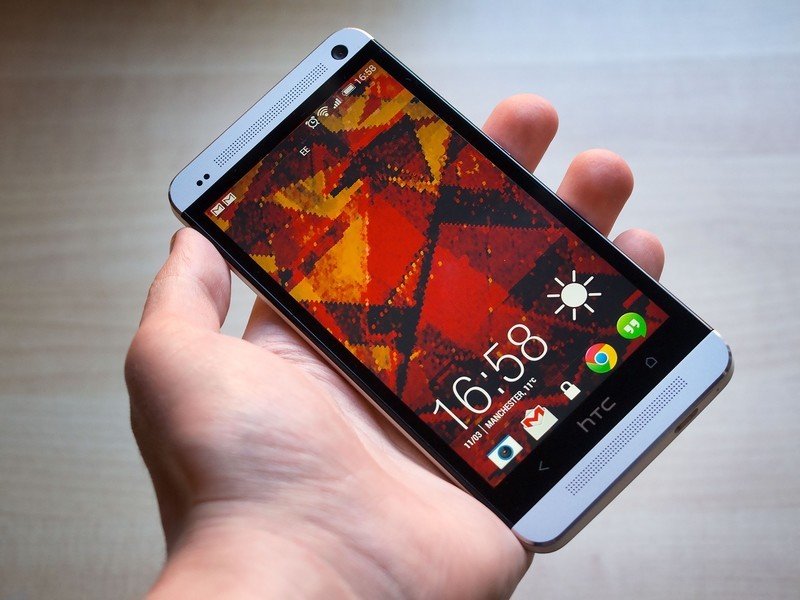Decade in review: The HTC One M7 started trends it couldn't finish

The HTC of today is a long way removed from the company that launched the year's best flagship phone back in 2013. In those days, HTC was at the peak of its popularity, with serious industry clout and money to spend following strong performances in 2010 and 2011. In the Android world, the pendulum would seem to swing from HTC to rival Samsung from year to year.
HTC's disparate 2012 smartphone lineup, consisting of the One X, One S, One X+ and EVO 4G LTE, had failed to set the world alight. And so as a new year dawned, HTC prepared for the launch of the "M7" -- simply the M7, as it was known in rumors at the time. Indeed, in a video clip since lost to time, at the company's Chinese New Year party, CEO Peter Chou screamed "HTC One!" and "M7!" to a crowd of cheering employees. HTC was on top of the world, and Chou and his assembled disciples in Taipei knew it. This was the peak of HTC's golden age; it was about to launch what would be widely regarded as its best phone ever.
The One and only
Why you can trust Android Central

The HTC One, as it was branded, recycled the branding of the previous year, but the phone itself couldn't have been more different. It featured the first aluminum unibody in an Android flagship, alongside the best screen, fastest performance and striking, unmistakable design tenets from chief designer, Scott Croyle.
Front and center: BoomSound. A bombastic new brand that took advantage of HTC's recent Beats acquisition to emphasize front-facing audio fidelity. Sandwiched between it was an LCD display that ran rings around the OLEDs of the day. And on the inside, the new Snapdragon 600 processor combined with touchscreen tech licensed from Apple gave HTC an undeniable performance edge.
Looking back, the HTC One was one of the few phones that I've been genuinely excited to unbox over the years. In 2013, this felt like something different and special, with cold metal on the outside and pure performance within. And when it roared to life for the first time with a BoomSound-enhanced jingle, I was taken aback at the power of its speakers. The entire package spoke to smartphones' new status as powerful media consumption devices, in addition to the communication credentials they'd already developed.
Ahead of its time

When I saw the Samsung Galaxy S4 for the first time a few weeks later, it was obvious HTC had won. The reason why? Design. While both Samsung and HTC, the two Android giants of the time, plowed ahead with high technology, only HTC was able to focus the power of it through the lens of excellent hardware and software design. The efforts of Samsung, a far bigger company by comparison, looked sloppy and childish.
The M7 was also one of those phones that saw HTC debuting groundbreaking technologies which, with hindsight, seem far ahead of their time. The Ultrapixel camera took fairly low-res 4MP photos, but with unmatched low-light fidelity for 2013. The relative pixel sizes of the M7's camera broadly line up with what we're seeing from late 2019 and early 2020 cameras, though with far weaker processing.
HTC's Sense 5 software also brought in BlinkFeed — controversial to begin with, but now a clear predecessor to the Google Feed, as well as iOS's Today View. Phone nerds loved to complain about BlinkFeed's persistent presence, but its combination of news, social and app updates was fairly groundbreaking.
So too was HTC Zoe. Thanks to its unique sensor and computational horsepower, the M7 was able to shoot a bunch of frames both before and after the main photo in any capture, letting you scroll back through time to restore missed moments. HTC's Gallery would also gift you video highlights, a feature that eventually made it to Google Photos and the iPhone. See, ahead of its time.
Peak HTC

The 2013 HTC One introduced so many innovative features that HTC ultimately failed to capitalize on. Beats was sold off at a loss the following year. HTC Zoe languished and eventually died. BoomSound was sacrificed in the name of ever-smaller screen borders. And the UI that actually managed to surpass stock Android in terms of smoothness, responsiveness and aesthetics became stale as an increasingly cash-strapped HTC was reluctant to pour money into its software experience.
You can debate whether HTC truly peaked with the M7 in 2013, or the successor, the M8, in 2014. Either way, somewhere in the interim between those two years HTC peaked, and from there the inevitable decline began. A brain drain began with the departure of Scott Croyle, followed by a cavalcade of executives and eventually Peter Chou himself. The M9, HTC 10 and U11 saw steady declines in sales as the company's smartphone division swirled in the drain.
As such, the One M7 stands as an example of just how brilliantly HTC's star shone at its zenith, as well as the start of a cautionary tale on the perils of the smartphone business, and the fickle nature of the consumer base.
But for a time, HTC was at the top of the Android heap.
Get the latest news from Android Central, your trusted companion in the world of Android

Alex was with Android Central for over a decade, producing written and video content for the site, and served as global Executive Editor from 2016 to 2022.
